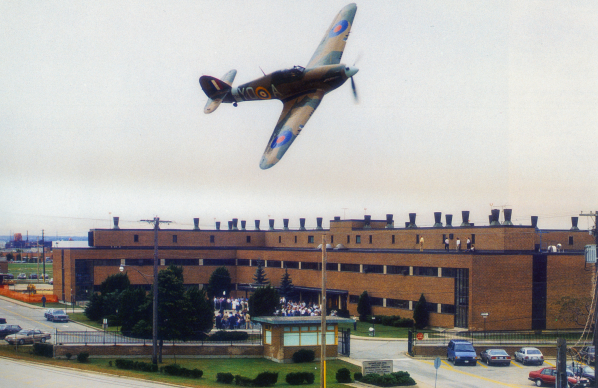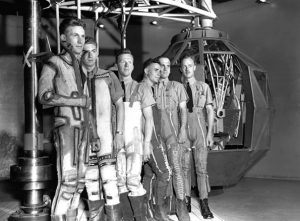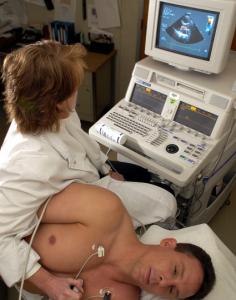Defence and Civil Institute of Environmental Medicine

For being one of Canada’s most significant research establishments and a world leader in innovation related to the protection and performance of humans in aviation and aerospace, the Defence and Civil Institute of Environmental Medicine was presented with Canada’s Aviation Hall of Fame’s Belt of Orion Award for Excellence in 2025.
The Defence and Civil Institute of Environmental Medicine (DCIEM) played a pivotal role in advancing aviation-related human performance, safety, and medical standards between 1971 and 2001.
Formed through the merger of the Canadian Forces Institute of Environmental Medicine (CFIEM) and the Defence Research Establishment Toronto (DRET), DCIEM's origins date to just before the outbreak of the Second World War, when Frederick Banting, co-discoverer of insulin, recognized that aviation medicine would be critical to defence and pushed for creation of an inter-departmental committee. The resulting Associate Committee on Aviation Medical Research was established at the National Research Council in 1939 and its participating teams of experts laid the groundwork for much of the research conducted at DCIEM. The team focused heavily on the design of testing facilities, including development of a cold room with a low-pressure chamber, and protective equipment. The latter included a variety of innovations, perhaps the best-known being Wilbur Franks’ G-suit, although improved methods of aircrew selection were also an important part of the operation’s work, as was more general medical research.

Wilbur Franks’ anti
G-suit were tested in
the first centrifuge
at what would
become DCIEM.
Banting’s vision soon led to the establishment of the No. 1 Clinical Investigation Unit (CIU) in Toronto, where DCIEM was based, setting the foundation for decades of pioneering work in aerospace medicine and defence research. The group went on to develop a unique model that combined the expertise of civilian scientists and military personnel. This collaboration fostered an environment of cutting-edge research that would earn DCIEM international acclaim, particularly among allied nations. The institute’s contributions span across multiple areas, with numerous innovative achievements that directly enhanced operational effectiveness, particularly in aviation and aerospace sectors.
One of DCIEM’s most significant contributions lies in the development of aircrew life support systems. Among these is the STING (Sustained Tolerance and Increased G) ensemble, a groundbreaking anti-G suit that improved pilots’ tolerance to high G-forces by using positive pressure breathing, thus minimizing the physical strain traditionally required. DCIEM also worked closely with Gentex Corp. to design improved helmets for both fighter jet and rotary-wing pilots, enhancing protection and usability. Active Noise Reduction technology, cold water immersion, aircrew cooling, and improved impact protection through better restraint systems and seat components were further contributions. To reduce the challenges posed by heat stress, for example, DCIEM staff developed a lightweight air-cooling vest, particularly valuable in high thermal load operations such as those experienced by CH124 aircrew during the Gulf War.
Operational research was another of its major areas of focus. During its thirty years, DCIEM made notable advances in understanding and mitigating fatigue, spatial disorientation, and motion sickness. Indeed, the organization became a world leader identifying and mitigating the effects of circadian rhythm disruptions for which it developed innovative countermeasures, such as bright light therapy, melatonin use, and sleep aids. Its studies in this area not only influenced military operations but also informed practices in commercial aviation and civilian industries such as Transport Canada and the submarine fleet. Similarly, its contributions in spatial disorientation training helped pilots better understand and recover from orientation issues that could lead to fatal accidents. DCIEM also ran successful programs on motion sickness desensitization and tested effective medications for aircrew use.

Central Medical
Board was the only
full-spectrum
clinical aeromedical
facility in Canada.
One of the institute's major operational research undertakings was a comprehensive review of human factors affecting CF-18 fighter pilots. Requested by the Commander of Air Command, this review led to 25 detailed recommendations aimed at improving both flight safety and operational effectiveness. DCIEM also supported the CH-146 Griffon rotary wing operations through human engineering assessments that guided lifecycle management decisions.
Training was another area on which DCIEM placed great emphasis, especially through simulator technologies. Its teams developed advanced flight simulators that helped train aircrew in complex tasks like shipboard helicopter landings and multi-aircraft formation flying. Using virtual prototyping in their Aircraft Crewstation Demonstrator project, they provided cost-effective tools for validating cockpit designs. The institute’s human centrifuge provided G-training for all Canadian Armed Forces fighter pilots, an essential preparation for enduring high G-forces during flight. Equally important to the institute was the training of medical personnel; DCIEM provided aerospace medicine training for Canadian Armed Forces Flight Surgeons, civilian aeromedical physicians, and Transport Canada officials throughout its three decades of operation.
At the heart of DCIEM’s medical services was the Central Medical Board (CMB), the only full-spectrum clinical aeromedical facility in Canada. CMB evaluated all Canadian Forces pilot candidates and offered medical assessments to aircrew with health concerns ranging from pulmonary issues to cardiovascular disease. Staffed by a diverse team of experts in aerospace and occupational medicine, internal medicine, and ophthalmology, the CMB also handled referrals from civilian institutions like Transport Canada and major airlines. Their work enabled many civilian pilots to return to flight status following serious health conditions such as heart attacks or diabetes, even when on medications that would traditionally preclude flying.
In the early 1980s the DCIEM added a new aeromedical project to its work: selection and assessment for Canada’s new astronaut program. Between 1983 and 2001, CMB staff were involved in the screening of all Canadian astronaut candidates, many of whom underwent in-person assessment at the facility. DCIEM also played a vital role in astronaut training, delivering G-force and altitude chamber exercises, and even supporting isolation experiments such as CAPSULS conducted by the Canadian Space Agency using DCIEM’s Diving Chamber.
DCIEM’s facilities, which comprised an extensive suite of specialized research and training equipment, many of which were unmatched in Canada, were central to the institute’s success. They included a human centrifuge, used to simulate high G-force environments; a hypobaric chamber, capable of replicating altitudes exceeding 100,000 feet; and an impact studies facility that tested restraint systems and seating for both helicopters and fixed-wing aircraft. DCIEM’s climatic chambers were used to replicate extreme environmental conditions, aiding the development of clothing and cooling systems for Arctic and desert operations. Likewise, the noise simulation facility allowed for rigorous testing of communications gear and ANR systems under realistic acoustic conditions. Also important was the human water calorimeter, which was used to assess the effectiveness of immersion suits, crucial for aircrew operating over water. The sustained performance facility enabled research into the cognitive effects of sleep deprivation and fatigue, especially relevant to long-duration flights or combat operations. These studies examined team-based decision-making and evaluated alertness-enhancing substances. DCIEM also operated a clinical aerospace medicine facility that included advanced equipment, such as anthropometric measurement tools to determine compatibility with aircraft cockpits, a full pulmonary and cardiovascular laboratory (including stress testing and echocardiography), and a comprehensive ophthalmology suite. This comprehensive set-up made it a central hub for aeromedical research and assessment.
DCIEM’s research and development activities were executed through in-house initiatives, collaborations with universities and industries, and government partnerships. This work generated a vast output of

role in the training
and preparation of
Canada’s astronauts,
from the first
candidates selected
(above), through to
those training in
2001.
publications, patents, and industry partnerships. Canadian companies, including Canadian Marconi, Carleton Life Support, Gentex, and META Research, directly benefited from DCIEM’s technology transfer initiatives, and the institute generated over 100 patents, a testament to its innovative capacity. Moreover, because its scientists maintained close links with academia and medical institutions and frequently mentored and supervised postdoctoral students, DCIEM’s legacy in scholarly literature is equally broad. Indeed, its output included hundreds of internal reports and externally published papers covering topics such as human engineering, flight safety, psychology, and aerospace medicine. Staff also contributed to international organizations like NATO and AGARD, authored scholarly texts and standards documents, and presented extensively at global scientific conferences.
DCIEM’s many contributions to aerospace medicine, defence research, training, and operational readiness make it a cornerstone in the evolution of aviation safety and human performance in Canada. Its integrative approach melding rigorous research with real-world application, high-end facilities, and deep interagency collaboration ensured its place as a leader in its field. Its ongoing influence is reflected not only in the technologies and procedures adopted by the military and civil aviation sectors but also in the global reputation it built for Canada in the domains of aeromedical science and defence innovation.
